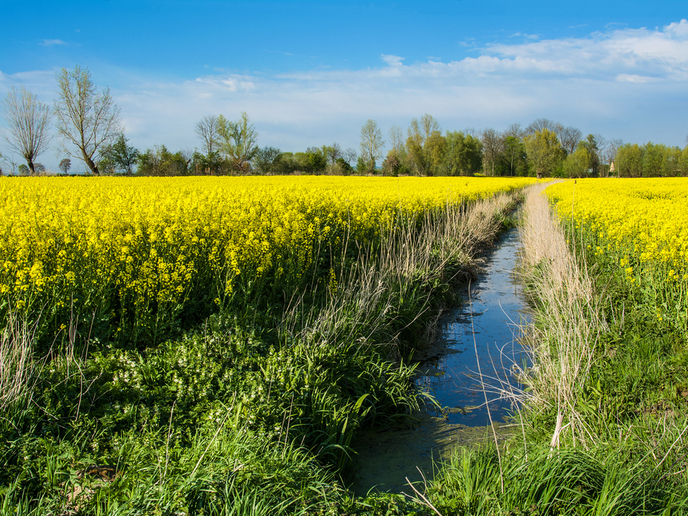Agricultural drainage changes soil more profoundly and faster than previously assumed
As well as storing carbon, soils also work as filtration systems, keeping surface water and groundwater clean. Soil mineral particles (such as clay) are crucial for the sorption and stabilisation of organic matter and nutrients (like phosphates) and can also reduce the toxicity of pesticides. A 2008 study found significant loss of mineral particles close to drains, only 16 years after installation. Previously it was assumed that such changes would take centuries to millennia. Despite these findings, the study was not replicated until the EU-funded IDESoWa (Increased drainage effects on soil properties and water quality) project set out to investigate, for the first time, how changes in the mineral composition of soils affect organic matter and nutrient cycling. Similarly to the 2008 study, the IDESoWa project found loss of clay particles close to drains. “The assumption that soil mineral conditions remain quite static during a human lifetime needs re-evaluation,” explains Antra Boča, the Marie Skłodowska-Curie fellow from the Latvia University of Life Sciences and Technologies, the project host.
Agricultural drainage and soil evolution
Soil water management techniques such as subsurface drainage systems can alter soil processes. Yet, there have been surprisingly few studies into the effect of human activities on soil mineral composition. To learn more about the effect of agricultural drainage on soil processes, the IDESoWa team dug pits perpendicular to tile drains in three different land use scenarios. These were: clay loam under tilled agriculture and pasture formed on glacial till sediments, and silt loam under no-till agriculture formed on glacial lake sediments. The researchers collected soil samples at various distances from the drain. The soil furthest away experiences water saturation conditions most similar to that prior to drain installation, allowing a comparison between unaltered and altered soils. The soil was sampled up to the depth of the drains, approximately 1 metre, to determine its mineral composition, as well as phosphorus sorption capacity, organic carbon stability and nitrogen cycling. “While the pandemic has delayed some data, we already have interesting results. We found that 40 years of subsurface drainage can change the mineral composition of soils so substantially that it is even evident on such heterogeneous materials as glacial till,” says Boča. Somewhat confusingly the team found that the concentration of total iron did not change with distance to the drain, as it had for clay. “As iron is closely associated with clay particles, a loss similar to that for clay would be expected. Additionally, the different redox conditions in the soil at varying distances from the drain, should also impact iron mobility. Soil closer to the drain typically experiences less oxygen depletion as water drains away quickly, whilst soil further away will experience oxygen depletion because there is more chance of water saturation,” Boča continues. To follow this up, the team intends to study different iron forms as the current finding seems illogical. “Given how important iron is for the cycling of nutrients and organic matter, we need to understand what is happening,” adds Boča.
Sustainable soil management
Minerals are the backbone of soils, affecting many biological and chemical processes. Understanding changes caused by subsurface drainage installations will help incorporate ecosystem services, such as soil organic matter storage and nutrient/pesticide filtration, into agricultural practices. “When all the data have been analysed, the results could help improve soil management practices for artificially drained soils, prevalent in many European countries,” notes Boča. Future work will investigate how changes in soil mineralogy affect the toxicity of pesticides. This will be undertaken in fields with both controlled (where water is left in soil for longer) and uncontrolled drainage systems. Both systems create different reduction-oxidation conditions for mineral weathering and transformations, which likely also affects soil mineral-pesticide interactions.
Keywords
IDESoWa, drainage, water, organic matter, nutrients, pollutants, soils, minerals, clay, iron, pesticides



